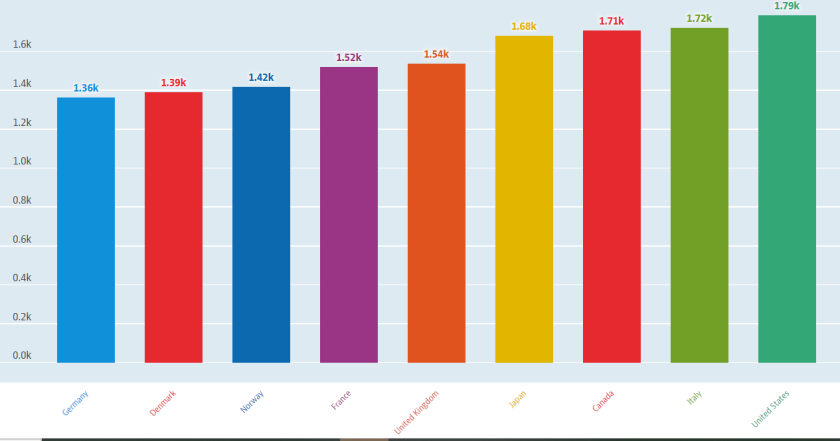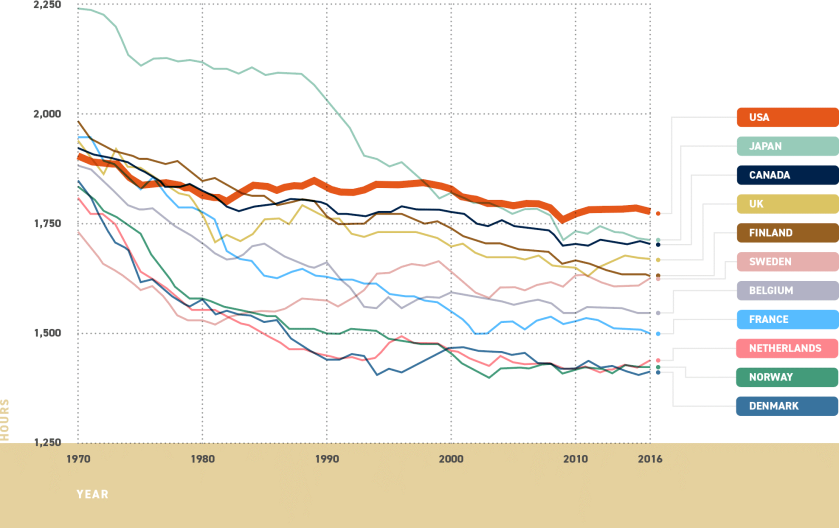http://conversableeconomist.blogspot.com/2019/12/update-on-carbon-capture-and-storage.html
Analysis by the Intergovernmental Panel on Climate Change (IPCC) and International Energy Agency (IEA) has consistently shown that CCS is an essential part of the lowest cost path towards meeting climate targets. The IPCC's Fifth Annual Assessment Report (AR5) showed that excluding CCS from the portfolio of technologies used to reduce emissions would lead to a doubling in cost - the largest cost increase from the exclusion of any technology. ... To limit global temperature rises to 1.5°C above pre-industrial levels, the world must reach net zero emissions by around 2050. Most modelling scenarios show that this will require significant deployment of negative emissions technologies. Bioenergy with CCS (BECCS) is one of the few available that can deliver to the necessary scale.In the report, Nicholas Stern adds:
One of the opportunities that we have at hand, carbon capture, use and storage, will play a vital role as indicated by the Intergovernmental Panel on Climate Change's Report on Global Warming of 1.5 ºC. The diversity of its applications is immense; from direct air capture delivering negative emissions, to the ability to prevent infrastructure emissions lock-ins by abating existing infrastructure in the industrial and power sectors, capturing, using and storing carbon will be a vital instrument in reaching net-zero emissions goals.The report offers a detailed overview of report of CCS facilities around the world in various stages from early development to actually operational. However, the actual operational CCS facilities are currently measured in dozens, when they need to be measured in hundreds or thousands. Sally Benson, a professor of energy engineering at Stanford, writes about CCUS, or "carbon capture, utilization, and storage":
Over the last 20 years, the role of carbon capture and storage has evolved from "nice to have," to "necessary," and now, CCUS is inevitable. We need Gt* scale CCUS now. ... [W]e have an ambition gap between the rate that CCUS is growing today – about 10 per cent a year, compared to the rate needed to reach a Gt/year by 2040. If we could just double scale-up rate to 20 per cent per year, and sustain that to 2040, bingo, we reach 1 Gt/year by 2040.Here's a partial sense of the range of possibilities for CCS. Perhaps the most obvious is to apply this technology at places where fossil fuels are being burned. For example, when burning natural gas:
Eliminating almost all greenhouse gas emissions along the natural gas value chain is necessary if we are to meet the target of net-zero emissions by mid-century. More than 700 Mtpa of indirect CO2 emissions – almost equal to the emissions of Germany in 2016 – could be eliminated from oil and gas operations through the application of CCS. Applying CCS at gas processing facilities costs around USD 20-25 per tonne of CO2.But the technology can also be applied to other industrial operations that emit high levels of carbon, including factories that make cement, steel, and certain chemicals.
The good news is that as CCS expands in various ways, the cost of reducing carbon emissions in this way is falling.
There is strong evidence that capture costs have already reduced. ... Two of the projects, Boundary Dam and Petra Nova are operating today. The cost of capture reduced from over USD100 per tonne CO2 at the Boundary Dam facility to below USD per tonne CO2 for the Petra Nova facility, some three years later. The most recent studies show capture costs (also using mature amine-based capture systems) for facilities that plan to commence operation in 2024-28, cluster around USD 43 per tonne of CO2. New technologies at pilot plant scale promise capture costs around USD33 per tonne of CO2.Just storing carbon underground is certain possible, but from an economic view, it's more productive to store the carbon in a form that gets some additional economic value from it. One of the most prominent existing economic uses for stored CO2 is--heavy irony alert here--injecting it underground to extract more oil. But there are other examples: captured CO2 might be used as a feedstock for certain chemicals, polymers, concrete, and even fuels.
One possible future use for captured carbon emphasized in the report is in the production of clean hydrogen. There some recent buzz that clean-burning hydrogen might be greatly expanded in the future, but the question is how that hydrogen gets produced in first place. The report notes:
Currently, 98 per cent of global hydrogen production is from unabated fossil fuels, around three quarters stemming from natural gas. CO2 emissions from its production are approximately 830 Mtpa, equivalent to the annual emissions of the UK in 201894. ... Low-carbon hydrogen has been produced through gas reforming and coal gasification with CCS, for almost two decades. For example, the Great Plains Synfuel Plant in North Dakota, US, commenced operation in 2000 and produces approximately 1,300 tonnes of hydrogen (in the form of hydrogen rich syngas) per day, from brown coal. Hydrogen produced from coal or gas with CCS is the lowest cost clean hydrogen by a significant margin and requires less than one tenth of the electricity needed by electrolysis.Finally, discussions of this topic inevitably veer into the possibility of "bio-energy with carbon capture and storage," or BECCS. This notion here is to burn biomass of some kind for energy--like wood pellets--but then to capture and store the carbon. This would be a form of "negative carbon" energy. This approach might only make economic sense in a limited number of locations, but it's because it's an actual subtraction of carbon from the atmosphere, it's worth keeping in mind.
I'll just add that focusing carbon capture and storage on the industrial sector does not exhaust the possibilities. For example, I've noted some evidence that saving the whales could lead to increased ocean plankton and store additional carbon in that way. As another approach, certain agricultural methods have the result of sequestering more carbon in the soil, as discussed by Greg Ip in the Wall Street Journal, "How to Get Rid of Carbon Emissions: Pay Farmers to Bury Them," September 11, 2019). For exampleA Boston-based company called Indigo Ag Inc. is setting up a market where those who want or need to reduce their carbon emissions can pay farmers $15 to follow practices that will have the effect of sequestering one metric ton of carbon dioxide in the soil.
Perhaps the most aggressive and unproven possibilities for carbon capture and storage involve finding ways to extract carbon from the air directly. Of course, such methods only work if most of the energy going into them comes from non-carbon sources. For example, there's ageothermal power plant in Iceland which is drawing carbon out of the air--admittedly at modest scale--and then using a chemical process to turn the carbon into rock. If this technology advances and becomes more cost-effective, it will be interesting to calculate whether geothermal energy sites around the world might be used for this purpose.
Another technology that seems like a promising long-shot (if that's not a contradiction in terms) is being pushed by Project Vesta. Their website is full of position papers and background research arguing that if olivine rock was spread on beaches, it will undergo a chemical reaction as it mixes with seawater that absorbs CO2 from the atmosphere and turns it into rock. The project offers theoretical calculations that this approach could negate all of the current levels of atmospheric carbon emissions at a plausible cost--but they are just now working on a "test beach" experiment to get hard evidence.
Other than the enthusiasts at Project Vesta, none of the sources described here make any claim that carbon capture and storage can be a sufficient answer to holding down the rise of atmospheric carbon. But many of the sources here see it as a necessary and underappreciated part of the overall puzzle. Ultimately, the growth of a CCS industry is going to depend heavily on government. If the government provides clear incentives for carbon emissions to decline, like a carbon tax or regulations, then CCS will grow faster. If the government in addition makes it straightforward to site carbon storage areas without undue regulatory delays or legal risks, and add some financial incentives for such investments, then CCS will grow faster still
-- via my feedly newsfeed






